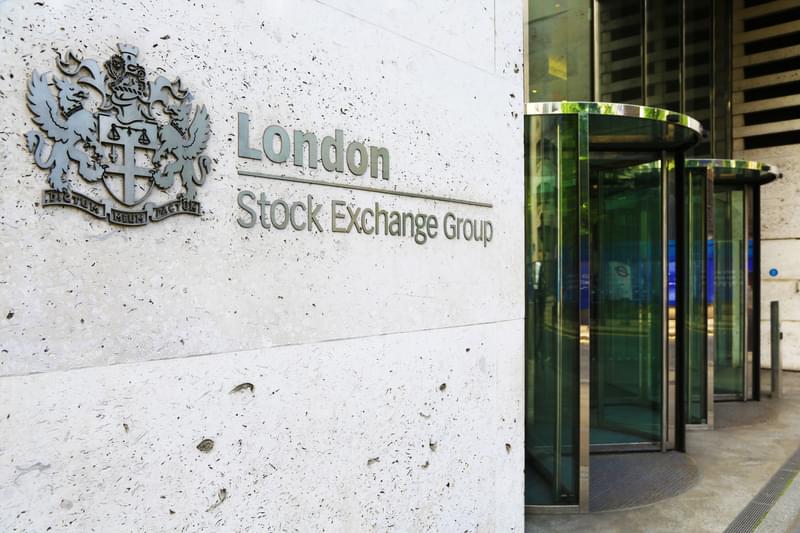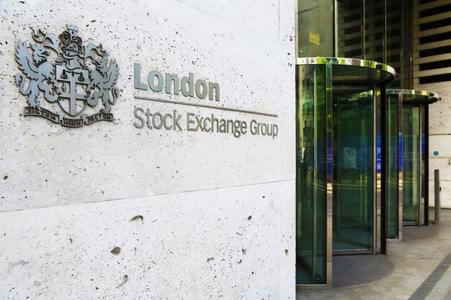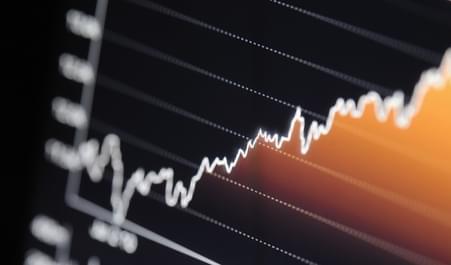Choosing the right strategic partners to help manage the transition towards sustainability will be crucial as asset managers become more selective in what – and whom – they choose to invest.
A Shifting Investment Landscape
Socially responsible investing, or financing linked to the UN’s Sustainability Development Goals (SDGs), 17 broad objectives spanning a range of activities, has grown by 200% over the last decade, generating some USD 23tn in assets globally, a rise underpinned by a tectonic shift in the asset management industry. A growing chorus of investors, from niche asset managers to the largest in the world, are increasingly applying an ESG lens to capital allocation. More than 90% of asset managers surveyed by Bonds & Loans Market Insights in January agreed that “Having an ESG policy has become essential for winning client mandates.”
Those results were echoed in a recent survey by the BlackRock Investment Institute, which noted that 66% of investors now include ESG considerations in their investment processes, with more than half of them using ESG factors primarily for screening and exclusions.
“ESG is an important factor for emerging markets investment, where it is perhaps even more crucial to understand non-financial yet tangible risks that may have a material impact on both sovereign and corporate issuers. Many of the industries that have a strong presence in EMs, face very palpable risks of accelerated physical asset depletion and valuation drawdown,” explains BlackRock’s Head of Emerging Markets Corporate Debt Jack Deino.
The global green bond market, a flourishing part of the sustainability-linked funding universe, has also grown leaps and bounds from almost non-existence within the space of less than 10 years, from less than USD5bn in annual issuance in 2010 to more than USD250bn in 2019, with global issuance set to reach USD 1tn imminently. Estimates from the Climate Bonds Initiative, a London-based non-profit that that also maintains the ‘gold standard’ for green bond certification, estimates global green bond issuance to exceed USD350bn in 2020, with more than USD50bn of supply coming from emerging markets.
This shift, driven by changing investor demographics and by the introduction of legislation in large financial centres requiring more corporate disclosure of vulnerabilities to non-financial risk, has never been more important for developing economies because they typically suffer the consequences of unsustainable economic practices more acutely than developed ones.
Did Green Really Skip the Middle East?
As investors become more sensitive to ESG factors and exclusionary in their securities selection, it will become exceedingly important for those based in parts of the world that depend to a large extent on extractive, carbon-intensive industries – and the Middle East in particular, given its increasing linkages to global financial centres.
However, green bond issuance figures alone would on the face of it suggest CFOs and treasurers in the Middle East have lagged their emerging and developed market peers when it comes to embracing sustainability as a cornerstone of funding.
“The perception of the sustainable finance market in the Middle East is partly due to the market’s focus on green bonds as a proxy for sustainable finance. This does not paint the complete picture of the development of sustainable finance in the region,” says Shrey Kohli, Head of Debt Capital Markets and Investment Funds at London Stock Exchange.
Indeed, sustainability has clearly become an important regulatory priority for Middle Eastern governments.
Well before ratifying the Paris Climate Change Accord in 2016, the UAE took a strong position on environmental sustainability, leading to the launch of a series of initiatives supporting energy efficiency and decarbonisation, with authorities committing billions of dollars to programmes like the Masdar initiative and others to help foster an environment for renewable energy, sustainable real estate infrastructure, water desalination, carbon capture and energy efficiency companies to thrive, mirroring similar efforts in Saudi Arabia.
Among the most promising efforts is the desire and commitment of the Dubai government to take a lead and become a hub for green finance in the region. The Dubai Green Fund, established by the Dubai Electricity and Water Authority (DEWA), is keen to play a key role in financing green projects and provide concessionary loans for investors. It is aiming to generate USD27.2bn in green assets under management. In October 2018, new legislation came into force in the UAE that provides a framework for sovereign bond and sukuk issuance to facilitate development of its primary and secondary green financial markets.
Making Sustainability More Visible
Kohli highlights the evolution of sustainable financing within London’s markets: “London Stock Exchange’s Sustainable Bond Market caters to social, sustainable and green bonds through dedicated segments. These are aligned to global principles such as the Green & Social Bond Principles, governed by ICMA, and other recognised equivalent regional standards such as the EU and ASEAN Green Bond Standards, based on independently verified frameworks and with mandatory annual reporting requirements”.
Indeed, and to Kohli’s point, the use of proceeds and the sustainability-linked structures in the Middle East is starting to broaden.
The region has seen three certified ESG-linked bond issuances and two sustainability-linked loans in four years: the National Bank of Abu Dhabi’s USD587mn 5-year green bond, issued in March 2017 before its merger and subsequent transformation into First Abu Dhabi Bank; Majid Al Futtaim’s (MAF) two 10-year USD600mn sukuk, placed in April and October 2019; DP World’s USD2bn dual conventional and sharia-compliant 5-year green loan, which was structured such that the margin of the facility is linked to the company’s carbon emissions intensity; and Etihad Airways’ EUR100mn loan to support a range of SDGs including green buildings, investment in women, biofuels, reduction of carbon footprint, waste management and recycling, humanitarian efforts, and wildlife protection.
The pipeline is picking up pace. Reports suggest that Egypt could come to market with a green bond as early as this year, while a handful of corporates are said to be in the early stages of preparing to issue green and sustainability bonds. Others are looking to follow MAF’s lead and issue green sukuk, where there is significant potential for growth because of the considerable overlap between sharia’s prescription for environmental protection and ethical investing, and the use of proceeds that are qualifiable under most green bond frameworks.
London Stock Exchange stands out among its peers for its pioneering work in raising visibility and broadening access to sustainability-linked assets, particularly in emerging markets. It was the first major stock exchange to launch a dedicated Green Bond segment in 2015. London Stock Exchange was also the listing destination of choice for the first green bond issued out of the Middle East, and subsequent debut issuances out of a range of emerging markets including Chile (debut sovereign green bond out of the region), Kenya (debut corporate green bond) and South Africa (debut international green bond).
“Being proactive in this space has allowed us to leverage our strengths as a hub for some of the deepest and most diverse pools of capital and bring greater visibility to a far broader set of sustainability-linked securities,” Kohli says.
“The Social Bond segment, for example, can provide a key avenue for capital transfer to where it is required in society. IFC’s first social bond since 2017, issued last month and listed on London’s Sustainable Bond Market, supports its USD8bn package to help the countries most impacted by the COVID-19 pandemic. Its proceeds are directed towards access to essential services, such as healthcare, and to support employment.”
In line with a broadening of the sustainability-linked funding market, and after months of consultations with diverse industry stakeholders, it launched Sustainable Bond Market (SBM) in October 2019 which broadened the use of proceeds to capture social and sustainability-linked issuance beyond purely green objectives, in accordance with frameworks and taxonomies developed by ICMA as well as regional bodies in Europe and Asia.
It now hosts more than 200 debt securities totalling more than USD50bn across 18 different currencies, making it one of the largest and broadest listing destinations of its kind.
“It is important for borrowers from a broad range of industries to be able to get ahead of shifting investment trends and access a wider pool of capital, and at the same time, give investors confidence in the sustainability-related qualities of the securities they buy,” Kohli says.
To that end, and in conjunction with the launch of the SBM, London Stock Exchange announced stronger classification rules for notes that can be listed on the exchange. Companies planning to list bonds on the exchange will need to submit verified annual reporting on how the proceeds of those issuances are spent, beyond simply upfront certification.
SBM also added an Issuer-Level Segment, as companies are beginning to look holistically at their business models to make them more sustainable. Kohli says the eligibility criteria for admittance to the segment were determined in close consultation with investors. “We asked green bond and specialist ESG investors about how they construct their green-linked portfolios,” he says. “Many of them told us that with portfolios of USD1 or USD2bn investing over 5-10 years, there are not enough assets available in the traditional green bond market. Investors said that they use their own data or third party sources to identify issuers’ green revenues. They are then comfortable with buying the plain vanilla debt of issuers whose green revenues are above a certain minimum threshold.” While preferred minimums varied among respondents, London Stock Exchange has set the bar relatively high, admitting companies to SBM with more than 90% of revenues defined as green.
The guidelines are complimented by the Green Economy Mark, which uses FTSE Russell’s green revenues taxonomy to recognise London-listed companies with green revenues in excess of 50%. The taxonomy is also applied to global benchmarks developed by FTSE Russell – including the FTSE Emerging Green Revenues Index, which is designed to increase exposure to companies in emerging markets engaged in the transition to a green economy. More recently, FTSE Russell launched the FTSE TPI Climate Transition Index Series, which combines FTSE Russell and TPI analysis, enabling investors to align their portfolios with climate transition and the goals of the Paris Agreement.
Transition Bonds is the Next Stage of Sustainable Finance Development
For the sustainable finance market to evolve in the Middle East and other regions that have a high-concentration of carbon-intensive sectors, Kohli believes the industry will need to embrace new funding structures that recognise the wide range of economic contexts in which companies operate, and incentivise broad-based behaviour change among organisations in order to help companies transition towards more sustainable practices.
Enel, an Italian multinational energy company whose holdings include oil & gas, is a good example of an organisation that placed so-called ‘transition’ bonds, which achieve just that. Last year, firm sold a USD1.5bn single tranche issue which was then followed by a EUR2.5bn issuance across three separate tranches. The USD1.5bn and the two shorter tranches of the EUR2.5bn issuance were linked to the company’s ambition of having at least 55% of their installed capacity in renewable energy sources by 2021. If the 55% goal is not reached by 31 December 2021, the coupon will be increased by 25bp until the bond matures. The 15-year tranche of the EUR2.5bn issuance was linked to cutting the company’s greenhouse gas emissions by 70% by 2030 when compared to the 2017 level.
With DP World and Etihad inking sustainability loans over the past two years, there is already a precedent in the region for similar structures; it’s likely only a matter of time until regional bond issuers embrace them, and apply a wider range of ESG-linked objectives to pricing.
London Stock Exchange is currently in the process of consulting with industry stakeholders on the best pathway towards developing the segment further. For example, KPI-linked and transition bond issuances could fit within its Issuer-level segment in the future
“Companies considered ‘brown’ today need structures that can help them make the transition to ‘green’. Transition bonds enable companies without sufficient ‘green’ projects to continue to access the widest possible range of liquidity pools. They will play an important role in broadening participation in sustainability-enhancing initiatives for both borrowers and investors,” Kohli concludes.









